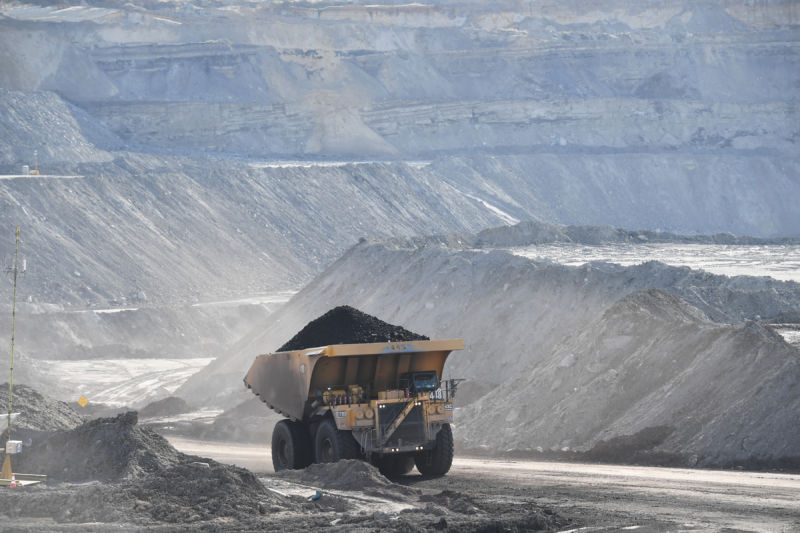TECH

US Energy office predicts little drop in emissions from energy sector by 2050
On Thursday, the US Energy Information Administration (EIA) released its 2019 Annual Energy Outlook (AEO), which contains projections about trends in energy—from the amount of fossil fuels produced and sold, to the growth of renewable energy—out to 2050.
This year, against the backdrop of recent warnings from top scientists about the urgency of climate action, the EIA's projections don't look great. Coal, one of the most carbon-emitting sources of energy, is still projected to provide 17 percent of the United States' electricity in 2050, and that's assuming that no carbon-capture technology has been made mandatory. Natural gas—a fossil fuel that is less carbon-emitting than coal but still a problem for climate change—will increase its share of US electricity production from 34 percent to 39 percent.
These projections are from the EIA's "reference case," which omits any predictions about unplanned policy changes. But they do contain assumptions about how technology will change and the economy will grow. In the EIA's own words (PDF), "The AEO2019 Reference case represents EIA's best assessment of how US and world energy markets will operate through 2050, based on many key assumptions. For instance, the Reference-case projection assumes improvement in known energy production, delivery, and consumption technology trends."
Needs a grain of salt
The EIA stresses that its predictions aren't gospel and can't take everything into account—history rarely follows a straight path, and that makes projections of the future inherently unreliable.
But critics of the EIA's Annual Energy Outlook say that its reference case (and even the six "side cases" that it outlines in its report) favors fossil fuels. (The six side cases are high and low oil price, high and low gas production, and high and low US economic growth. There are no outlined cases for renewable development or storage cost, for example.)
In addition, a 2016 paper in the journal Energy found that the "AEO consistently under-projects most types of non-hydro renewables." The EIA tried to address that criticism (PDF) after that paper came out, but doubt about the EIA's methodology on renewable energy persists. For example, this year the EIA does not appear to model offshore wind at any point in the future, even though several Atlantic states have contracts for considerable installations.
Critics say that overestimating the future of fossil fuels isn't a wonky argument over semantics; these projections are read and used by investors, researchers, and utility managers. Methodology that favors fossil fuels can perpetuate more fossil fuel investment. That could lead to a world where our carbon emissions either never get under control or stranded assets from policy changes create problems for the US economy.
On the wrong path
If nothing else, the EIA's reference-case projection should be a wake-up call that more needs to be done to decarbonize the US energy sector.
The reference case does take existing climate-related policy into account (so California's 100 percent clean energy by 2045 rule is reflected, for example), and, as such, renewables are projected to increase from 18 percent of US electricity production to 31 percent by 2050. But a world where renewable energy makes up only one third of the US' electricity mix and nuclear energy actually decreases from 19 percent of the mix to 12 percent of the mix would be well out of bounds of what's necessary to achieve Paris Agreement goals.
In fact, the EIA doesn't think carbon emissions from the energy sector will decrease by any significant amount, according to Utility Dive. The industry news outlet noticed that, unlike in previous years, the 2019 AEO did not include an estimate for US energy-sector carbon emissions for the reference case out to 2050.
Instead, an agency official provided Utility Dive with a spreadsheet detailing estimated carbon emissions for the reference case. The spreadsheet shows that carbon emissions will only fall 2.5 percent from 2017 levels by 2050. While carbon emissions from coal plants fall, carbon emissions from natural gas plants actually increase over the ensuing 30 years.
Unfortunately, that projection doesn't seem crazy, considering what happened in 2018. Despite all of the coal retirements that happened in 2018, US energy-sector emissions actually increased by 1.9 percent because of natural gas plant build-outs, according to a preliminary estimate by the Rhodium Group.
The EIA's reference case is likely a pessimistic view of the future, but it's a future that will be well within our reach if climate warnings are not taken seriously by the energy industry and policy makers.
Megan Geuss

No comments:
Post a Comment